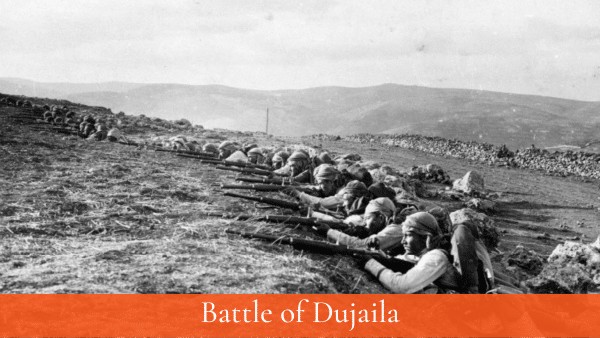General Aylmer's latest attempt to relieve the besieged British force at Kut-al-Amara on January 21, 1916, failed at Hanna. This led to paused trench warfare throughout February as the flooding season approached. The next battle would be the Battle of Dujaila.

Although Aylmer had received reinforcements originally intended for the Western Front, he remained pessimistic about his chances of successfully relieving Sir Charles Townshend and his 10,000 men at Kut.
After the latest setback at the Hanna Defile, he had advocated calling off the relief operation. However, the incoming regional Commander-in-Chief, Sir Percival Lake, was determined that Aylmer should try once again.
Aylmer, therefore, devised a plan to cross the Tigris and attack the Turk-held Dujaila Redoubt, which was located at the extreme outer edge of Es Sinn. The redoubt was held by some 25,000 experienced troops, many of whom had fought at Gallipoli as well as along the Tigris.
Aylmer was eager to wait for reinforcements from Gallipoli, but Lake was worried about the increasing flooding and ordered him to attack no later than March 15, 1916.
Aylmer, therefore, ordered the bulk of his two divisions, which consisted of approximately 35,000 men and 62 guns, to march overnight and storm the Dujaila Redoubt. He left 6,500 men behind in front of Hanna.
Townshend was to attack the Turkish forces from behind at the same time.
The Battle
The attack, originally scheduled for March 6, was postponed until March 8 due to heavy rainfall. General Kemball led the main advance at 10 am, but by noon he was stopped about 1,000 yards short of the redoubt.
General Keary followed up with a secondary attack at the same time, but he missed a clear opportunity to pierce weakened areas of the Turkish line. Townshend himself decided to call off his own planned attack from Kut once he determined that the morning's operation had failed.
The attack faded, and British forces shortly afterward returned to their starting positions, having suffered a further 3,500 casualties compared to 1,200 Turkish losses.
Aylmer was recalled and replaced by the unpopular George Gorringe on March 12, 1916, after the latest dismal failure of the relieving force. The British high command was finally realizing that it was unlikely that Kut would be relieved.
One final effort was made, the First Battle of Kut, the following month. However, its failure sealed the fate of the garrison at Kut.
